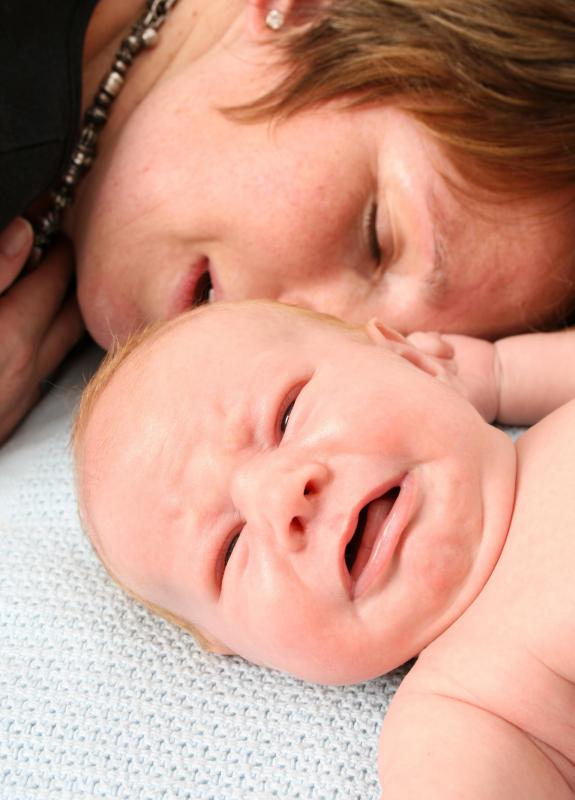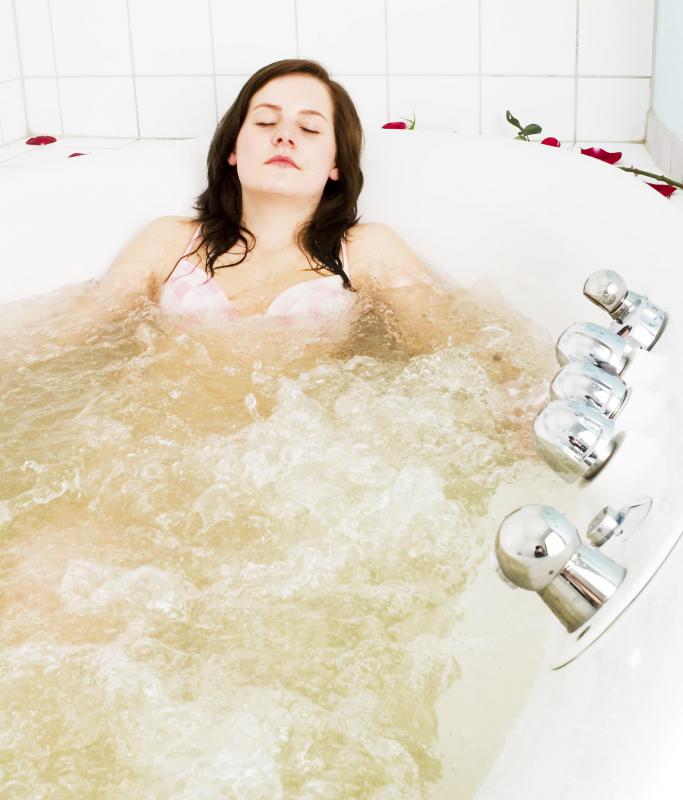At TheHealthBoard, we're committed to delivering accurate, trustworthy information. Our expert-authored content is rigorously fact-checked and sourced from credible authorities. Discover how we uphold the highest standards in providing you with reliable knowledge.
What is a Rest Cure?
The rest cure was a treatment for what was deemed hysteria in women. It had great popularity in the 19th century as a way to treat women with mental illnesses that might later be termed generalized anxiety disorder or major depression. It might also be applied to women of the upper classes who were simply exhausted by the chores of raising children, overseeing large households, or who were suffering postpartum depression after the birth of a child.
Dr. Silas Weir Mitchell developed the rest cure. He essentially imprisoned women for up to two months, and gave them little contact with the outside world. In the first few weeks, women were not allowed engage their minds by reading or performing small activities. Most were even not allowed to roll over in their beds, suggesting that they may have been restrained. Often, according to Dr. Mitchell, by the fifth or sixth day, most women became “tractable,” and did not resist the imposed monotony. This statement suggests that many women probably fought this treatment during initial days of imprisonment.

Mitchell clearly saw some success with his treatment, which also included daily massage, and probably clitoral stimulation, as was common for the treatment of hysteria. It is fair to say, that most women today would evaluate the rest cure as a horrible, punishment inflicted on women who were possibly merely anxious, or were suffering from a mental illness. Since husbands frequently were allowed to make decisions regarding their wives, the perception of the husband could determine whether a woman would endure such a treatment. It is small wonder that many women saw cooperation as a means toward escaping from Mitchell’s cure.

One of the most interesting indictments of the rest cure is the fictional piece, “The Yellow Wallpaper,” by Charlotte Perkins Gilman. The work describes from first person perspective the gradual insanity of a woman undergoing this treatment. Gilman even sent a copy to Dr. Mitchell, who did not respond. Gilman’s central character is actually driven insane by the treatment that is supposed to restore her sanity. Her loneliness and her total separation from her family are dwelt on, and make an effective argument against this cure.

However, Gilman errs because the rest cure was probably not likely to cause insanity. Its application might worsen the condition of someone with a mild to moderate psychological problem. Today, even institutionalization of people with mental illnesses focuses not on solitude but on integrating the ill person into regular activities such as daily group therapy, classes on coping strategies, and daily activities like therapeutic art.

Dr. Mitchell’s treatment may also be classed as extraordinarily sexist, since the rest cure was almost always applied to women. Since women were thought by many to be very different than men, and also guided by their hormones, this treatment was supposed to be applied to what were considered diseases of the female mind. The “cure” was directed at females due to a basic lack of understanding regarding women. It was also almost always applied to women of middle to upper classes, since working women were thought to be sturdier and less susceptible to hysteria.

With the advent of therapy as developed by Freud, Jung and Adler, the rest cure finally sank into obscurity as bad medicine. Greater understanding of hormonal function in women helped to develop treatments for both men and women. Current understanding of the chemical action of the brain has also helped develop medications that can significantly allay anxiety or major depression. Mitchell’s rest cure is now thought by many to have been yet another violation of women's rights during a time when they were unable to be their own advocates for equal treatment by members of the medical community.
AS FEATURED ON:
AS FEATURED ON:

















Discussion Comments
Just as a side-note: Gilman actually released an article about why she wrote "The Yellow Wallpaper." The story is based somewhat on her actual life. Gilman was treated by Dr. Mitchell in 1887 and endured the rest cure for three months. She says she "came so near the borderline of utter mental ruin." Of course, since her short story is fiction, she added a few embellishments to make the stories point even clearer.
So no, women probably did not become psychotic and/or hallucinate to that extent, but she did experience this first hand and needed to share how detrimental this "cure" was. I wouldn't say she "erred" in her story. It accomplished exactly what she wished. Dr. Mitchell did change his method of treatment for women after reading the story she sent him. The rest is history.
Looking at it from a man's perspective, I really wonder exactly how indoctrinated men were with the idea that women were weaker and apt to fly off into insanity at the slightest provocation.
It would have to be pretty intense to get to the point where someone would perform such abject stupidity -- I mean, come on, curing someone by tying them to a bed and ignoring them for two months? Sounds more like a convenient way for annoyed relatives to get rid of someone to me.
So I stumbled on this site while doing background research for a The Yellow Wallpaper analysis paper I've got due in a few weeks, and I have to say, I am simultaneously horrified and fascinated by this information.
I was diagnosed with major depression at age 19 after several years of basically running on autopilot, and it makes me so scared to think that that could have landed me in a rest cure home back in the day.
I am just so thankful for all the advances in medicine -- now all I have to do is take a pill, not give up my life, freedom, and even movement!
Reading about stuff like this just absolutely blows my mind. It seems like it could never have happened in real life, but in reality, rest cures were a real fact of life not that long ago -- it would have been during my great-great grandmother's lifetime.
While on the one hand it is truly frightening to think how ignorant and barbaric some of the treatments of that time were, it is also encouraging to see how far we've come.
Although there is still a stigma associated with anxiety and depression, at least most people don't end up strapped down in their bed for two months because of it.
Of course, this also begs the question of how people two centuries from now will view our medical practices...
Post your comments